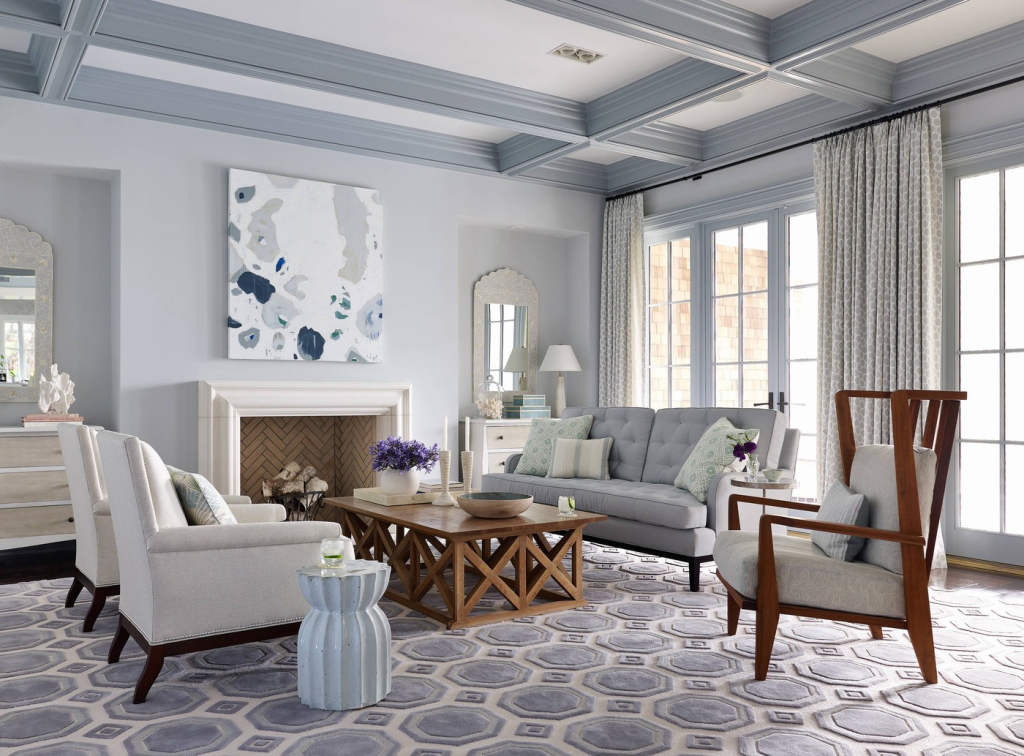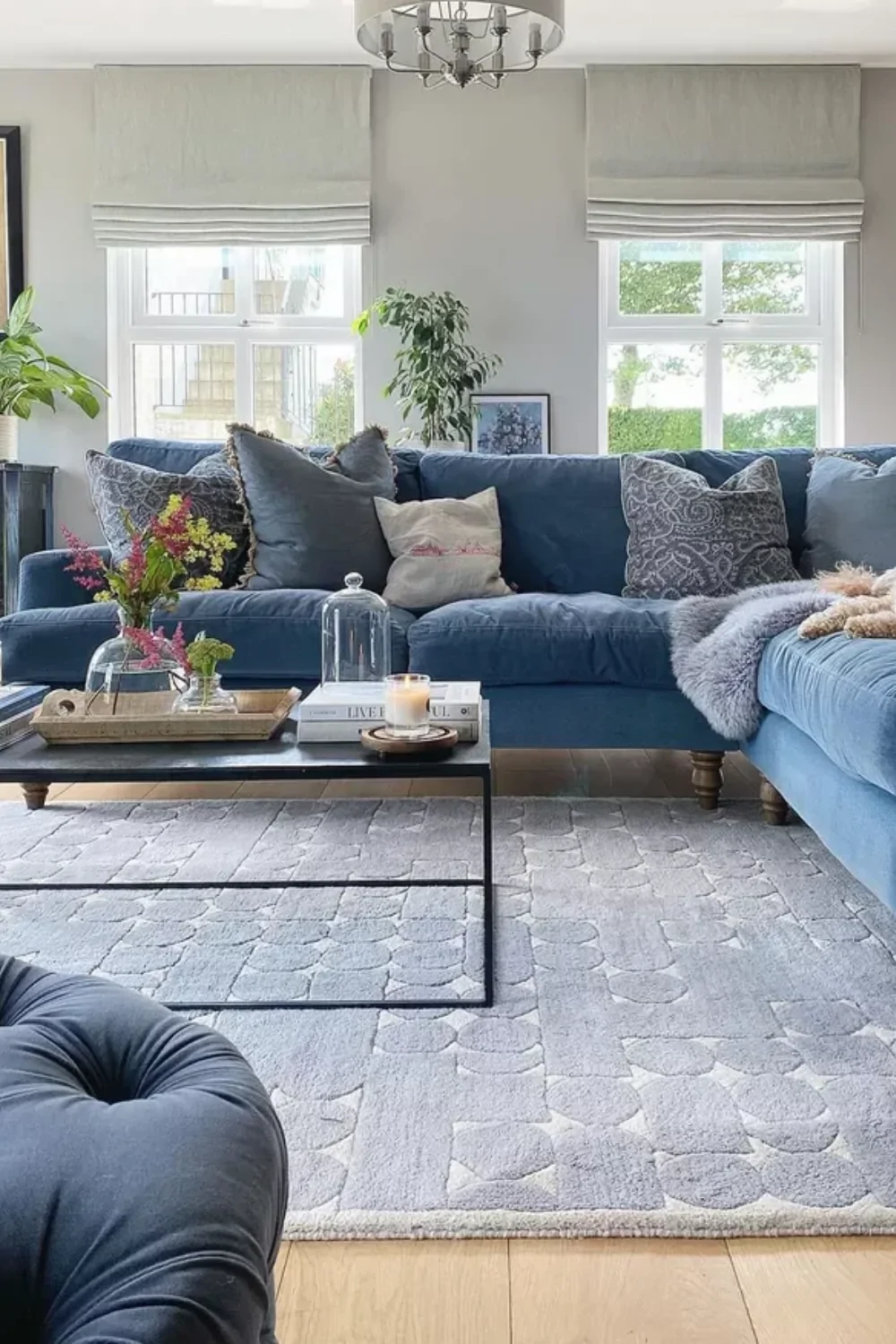Blue-gray is the ultimate chameleon of interior design, effortlessly blending calm sophistication with versatile adaptability. Whether you crave a coastal vibe, a modern edge, or a cozy traditional aesthetic, this hue bridges warm and cool tones to create a balanced, inviting atmosphere. In this article, we’ll explore 10 inspiring blue gray living room ideas to incorporate into your living room, along with actionable tips for pairing textures, accents, and lighting. Let’s unlock the potential of this timeless shade!
A living room isnt ctually complete without an eye-catching wallpaper, Check out these Outstanding living Room Wallpaper Ideas
You can also try checking out Brown Living Room Ideas
See Advanced Black Living Room Ideas
Relaxed Blue Couch Living Room Ideas
Tranquil Minimalist living Room Ideas
Inspiring Accent wall Ideas for Your living Room
10 Blue-Gray Living Room Designs You’ll Love










Understanding Blue-Gray: Why It Works
Blue-gray is a design powerhouse, striking a perfect equilibrium between tranquility and timeless elegance. Its versatility stems from its dual nature: the calming serenity of blue harmonizes with gray’s understated sophistication, making it adaptable to diverse styles, lighting conditions, and moods. Let’s unpack why this hybrid hue deserves a spot in your living room—and how to leverage its unique qualities.
1. The Science of Balance
Blue-gray’s chameleon-like ability to straddle warm and cool undertones makes it a lighting genius.
- North-facing rooms (cool, muted light): Opt for blue-gray shades with a hint of warmth (e.g., Benjamin Moore’s Hale Navy or Sherwin-Williams’ Tradewind). These counteract the room’s natural coolness, adding depth without feeling icy.
- South-facing rooms (bright, warm light): Lean into cooler blue-gray tones (e.g., Farrow & Ball’s Parma Gray), which temper harsh sunlight and create a refreshing oasis.
- Small spaces: Lighter blue-gray shades (like Stonington Gray by Benjamin Moore) visually expand rooms, while darker tones (e.g., Newburyport Blue) add intimacy to larger areas.
2. Psychological Appeal
- Blue’s calming effect: Linked to reduced stress and improved focus, blue evokes the stillness of water or sky, making it ideal for relaxation-focused living rooms.
- Gray’s sophistication: Gray adds a polished, neutral backbone, preventing the space from feeling overly thematic.
Together, they create a sanctuary that feels both serene and refined—perfect for unwinding after a long day or hosting guests.
3. Effortless Color Pairings
Blue-gray’s neutrality allows it to play well with bold and subtle hues alike:
- Warm neutrals (cream, oatmeal): Soften blue-gray’s cooler side and add coziness. Try a beige linen sofa against blue-gray walls for a relaxed vibe.
- Earthy tones (mustard, terracotta, sage): Inject warmth and organic texture. Pair a terracotta vase or sage-green armchair with blue-gray cabinetry for a grounded, nature-inspired look.
- Bold accents (navy, emerald, blush): Create striking contrasts. A navy rug or blush-pink throw pillow adds personality without overwhelming the space.
- Metallics: Gold, brass, or matte-black finishes elevate the palette—think gold-framed art or a black steel floor lamp.
4. Adaptable to Any Style
Blue-gray transcends trends, fitting seamlessly into design aesthetics:
- Coastal: Pale blue-gray walls + white trim + rattan and driftwood accents.
- Modern: Sleek blue-gray sectional + geometric lighting + monochromatic art.
- Traditional: Rich blue-gray upholstery + antique brass fixtures + Persian rugs.
- Industrial: Concrete-gray walls + navy leather sofa + exposed steel beams.
5. Pro Tips for Perfection
- Test swatches in context: Paint large samples on multiple walls and observe them at different times of day. Artificial lighting (warm vs. cool bulbs) dramatically shifts undertones.
- Layer textures: Combine matte blue-gray walls with glossy finishes (e.g., lacquered furniture) or tactile fabrics (wool, linen) to avoid a flat look.
- Mind the undertone:
- Blue-dominant: Feels airy and coastal; pair with crisp whites and natural wood.
- Gray-dominant: Sleeker and more modern; complement with charcoal and metallics.
Why Designers Love It
Interior experts gravitate toward blue-gray for its ability to act as both a neutral and a statement. It’s subtle enough to serve as a backdrop for art and decor yet rich enough to stand alone on an accent wall or sofa. Plus, it ages gracefully—unlike trend-driven colors, blue-gray remains relevant through seasonal shifts and design evolutions.
By mastering its undertones and pairings, you can craft a living room that feels simultaneously fresh, timeless, and uniquely you.
Conclusion:
Blue-gray is more than just a trend—it’s a design staple that adapts to your style, season after season. Whether you opt for a moody accent wall or a breezy coastal palette, this color fosters tranquility without sacrificing character. Experiment with textures, metallics, and contrasting hues to make your living room uniquely yours. Ready to dive in? Your serene sanctuary awaits!
